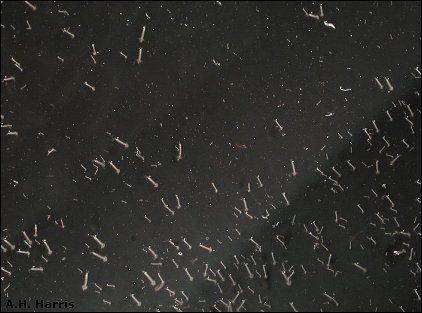
Civilization has both pluses and minuses. Some positive aspects involve the spread of food plants, allowing both a greater diversity of foodstuffs and an increase in the amount of food available in any one place. Of course, the spread of noxious plants and animals also is inevitable and well documented.
Our area almost certainly is in for a round of invasions of a slightly
different type. Not only do plants and animals spread beyond their original bounds, but
also their disease organisms. Most of us are aware of the introduction of West Nile
Virus into New York and its subsequent spread to numerous other states, including
Texas. It seems only a matter of time until this mosquito-borne virus enters the
northern Chihuahuan Desert region. But with increasing global temperatures, mosquitoes
that carry other diseases are spreading. Dengue Fever is marching north, and it's
not entirely impossible that the extensive areas of the United States that once
supported malaria may yet again be faced with that scourge. Swatting mosquitoes may
avoid more than an itchy skin. 
Contributor: Arthur H. Harris, Laboratory for Environmental Biology, Centennial Museum, University of Texas at El Paso.
Desert Diary is a joint production of the Centennial Museum and KTEP National Public Radio at the University of Texas at El Paso.

These mosquito larvae are inhabiting a hidden pool of water that supplied mosquitos to the vicinity for over 2 years before being located. Subsequent treatment alleviated the problem locally.
Between the time this was written and first presented on KTEP radio, mosquitos infected with West Nile Virus have been found in El Paso, and several deaths have resulted.